From the invigorating aroma that fills your kitchen in the morning to the comforting warmth of a midday pick-me-up, coffee plays a vital role in our daily lives. But achieving that perfect cup goes beyond just the beans; your coffee maker plays a crucial role in extracting those rich flavors and achieving the ideal balance. This comprehensive guide delves into the world of coffee makers, exploring different types, brewing techniques, and essential tips to help you elevate your coffee experience.
- Decoding the Coffee Maker: Types and Techniques
- Essential Tools and Techniques for Brewing Excellence
- Troubleshooting Common Coffee Conundrums
- Elevating Your Coffee Ritual: Beyond the Basics
- Sustainability and Your Coffee Habit
- Conclusion: Your Journey to the Perfect Cup
- Brew Your Best: Mastering the Art of Coffee
Decoding the Coffee Maker: Types and Techniques

The market offers a diverse range of coffee makers, each designed with specific brewing methods in mind. Understanding these distinctions is crucial for choosing the right machine for your needs and preferences. Let’s explore some of the most popular options:
“Choosing the right coffee maker is about aligning your brewing method with your lifestyle, taste preferences, and desired level of involvement.”
– James Hoffmann, World Barista Champion and Coffee Expert
Drip Coffee Makers: The workhorse of many kitchens, drip coffee makers are known for their simplicity and ability to brew larger batches. Water is heated and then drips over ground coffee in a filter basket, eventually flowing into a carafe. They are ideal for households or offices where multiple servings are needed. Drip machines can range from basic models to those with programmable features, allowing you to set a timer for your morning brew.
Espresso Machines: For those seeking intense, concentrated coffee, espresso machines are the way to go. These machines use high pressure to force hot water through finely ground coffee, resulting in a rich, flavorful shot topped with a layer of crema. Espresso forms the base for various specialty drinks like lattes, cappuccinos, and macchiatos. While manual espresso machines require skill and practice, automatic and super-automatic options simplify the process.
French Press: A classic immersion brewing method, the French press involves steeping coarsely ground coffee in hot water for several minutes before pressing down a mesh filter to separate the grounds from the brewed coffee. This method produces a full-bodied cup with a richer texture, as the oils and sediments are not filtered out. It’s a simple, affordable, and portable option.
Pour-Over: Offering precise control over the brewing process, pour-over involves manually pouring hot water over coffee grounds in a filter cone. This method allows for adjustments to water flow and brewing time, enabling you to fine-tune the extraction and achieve nuanced flavors. While it requires a bit more attention, the rewarding cup of coffee is worth the effort.
Single-Serve Pod Machines: Convenience is key with single-serve pod machines. These machines use pre-packaged coffee pods, offering a quick and consistent brewing experience. While less customizable than other methods, they eliminate the need for measuring and grinding, making them perfect for busy individuals.
Brew Ratio Optimization
Achieving optimal coffee extraction hinges significantly on the brew ratio, defined as the ratio of coffee grounds to water. A standard ratio often cited is 1:15 (one gram of coffee to fifteen grams of water), but this is merely a starting point and can be adjusted based on the specific coffee bean’s roast level, grind size, and desired flavor profile. A finer grind, for instance, necessitates a slightly lower ratio to prevent over-extraction and bitterness, as a finer grind exposes more surface area to the water, leading to faster extraction. Conversely, a coarser grind will require a higher ratio to ensure sufficient extraction and avoid under-extraction, resulting in a weak, sour brew.
- Darker roasts generally require a slightly lower brew ratio than lighter roasts due to their increased density and faster extraction.
- Experimenting with ratios between 1:14 and 1:16 is a good starting point for finding your ideal range.
- Using a scale to measure both coffee and water ensures accuracy and consistency in achieving your target ratio.
- A lower ratio (e.g., 1:14) can lead to a bolder, more intense cup, while a higher ratio (e.g., 1:16) will produce a milder, more balanced flavor.
- Factors like water temperature and brewing time also interact with the brew ratio to influence the final taste.
| Coffee Maker | Brewing Method | Best For | Key Features |
|---|---|---|---|
| Drip Coffee Maker | Water drips over ground coffee | Households/offices needing multiple servings | Simple, programmable, large batches |
| Espresso Machine | High-pressure extraction | Intense, concentrated coffee lovers | Rich flavor, crema, specialty drinks |
| French Press | Immersion brewing | Full-bodied, rich texture | Simple, affordable, portable |
| Pour-Over | Manual water pouring | Precise control, nuanced flavors | Adjustable flow, fine-tuned extraction |
Essential Tools and Techniques for Brewing Excellence
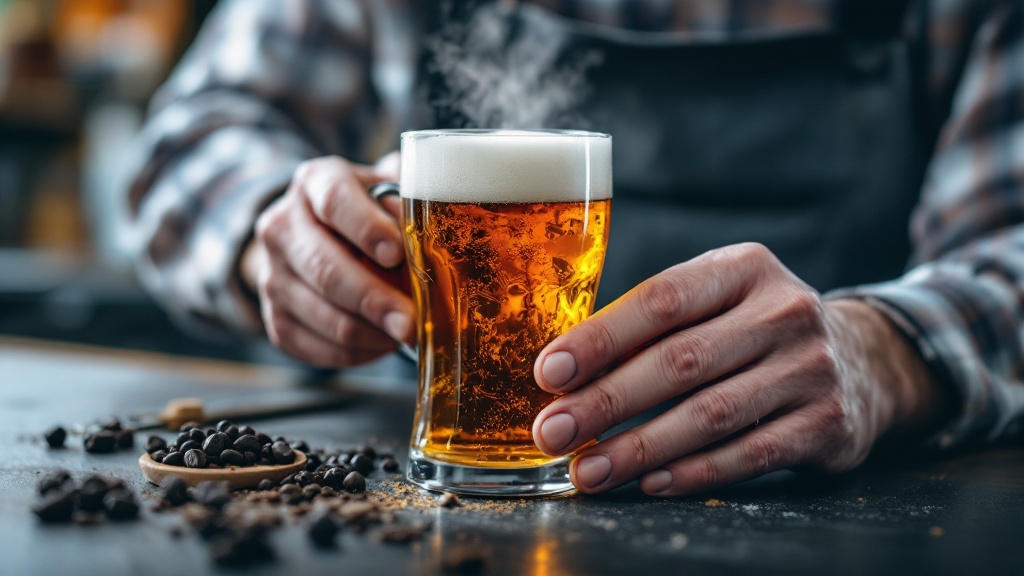
Beyond choosing the right coffee maker, understanding the fundamentals of brewing is paramount to achieving coffee nirvana. Here are some key factors to consider:
“Mastering grind size, water quality, and brewing ratios transforms coffee from a routine to an art form.”
– Specialty Coffee Association, Global Coffee Experts
Grind Size Matters: The grind size of your coffee beans significantly impacts the extraction process. A finer grind is suitable for espresso, while a coarser grind is preferred for French press or cold brew. Investing in a burr grinder, which grinds beans uniformly, is highly recommended for consistent results.
Water Quality: Since coffee is primarily composed of water, its quality plays a vital role in the final flavor. Using filtered water free from impurities is crucial for avoiding off-flavors. Consider using a water filter specifically designed for coffee brewing to optimize mineral content.
Coffee-to-Water Ratio: Achieving the perfect balance of coffee and water is essential. A general guideline is a 1:15 to 1:18 coffee-to-water ratio. For example, 30 grams of coffee to 480 grams of water (a 1:16 ratio) is a good starting point. Experiment to find your ideal ratio based on your taste preferences.
Brewing Temperature: The Specialty Coffee Association (SCA) recommends a brewing temperature between 195-205°F (90-96°C). Using a thermometer can help ensure optimal temperature for proper extraction.
Practical Tip: Keep a brewing journal to track your coffee-to-water ratios, grind sizes, and brewing times. This will help you replicate successful brews and fine-tune your technique.
Optimal Coffee Extraction
Achieving optimal coffee extraction hinges on precise control of several parameters, primarily grind size, water temperature, and brewing time. The goal is to maximize the extraction of desirable flavor compounds while minimizing the extraction of undesirable bitter or astringent compounds. This delicate balance is influenced by the specific coffee bean characteristics (density, roast level), and the brewing method employed. For example, a finer grind size will increase surface area, leading to faster extraction and potentially higher extraction yields, but also potentially over-extraction and bitterness if the brew time is too long or the water temperature too high. Conversely, a coarser grind will result in slower extraction, potentially leaving behind desirable compounds if the brew time is too short.
- Ideal water temperature generally falls within the range of 195-205°F (90-96°C).
- Grind size adjustment is crucial; finer grinds for espresso, coarser for French press.
- Bloom (pre-infusion) helps degas the coffee grounds, improving even extraction.
- Over-extraction leads to bitterness and astringency; under-extraction results in sourness and weakness.
- Different brew ratios (coffee-to-water) influence the final coffee strength and concentration.
- Consider using filtered water to avoid mineral interference with taste.
Troubleshooting Common Coffee Conundrums
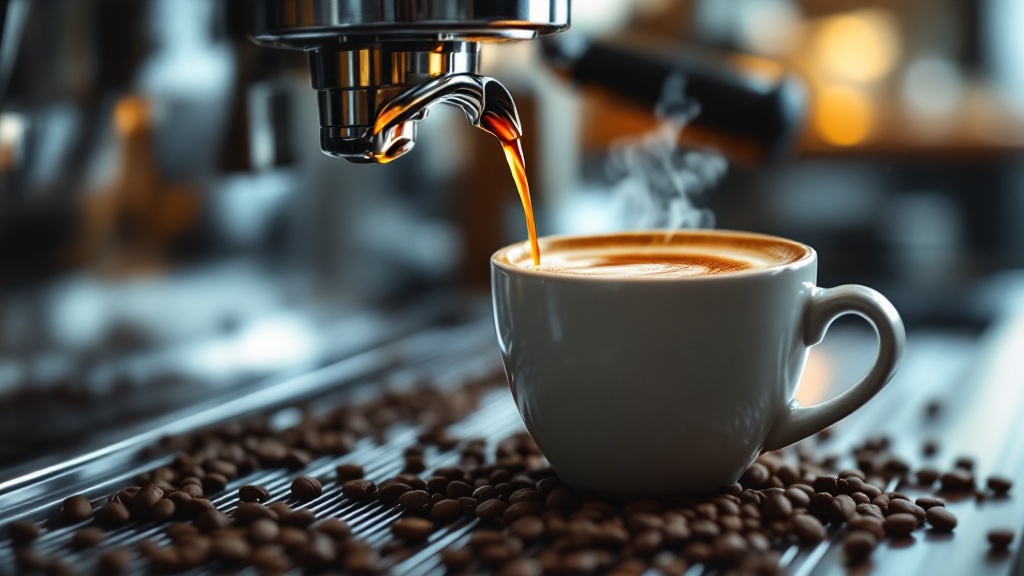
Even seasoned coffee enthusiasts encounter occasional brewing challenges. Here are some common issues and their solutions:
Weak or Bitter Coffee: If your coffee tastes weak, it could be due to a coarse grind or insufficient brewing time. Try using a finer grind and increasing the brewing time. Conversely, bitter coffee can result from a fine grind or over-extraction. Use a coarser grind and reduce the brewing time to address bitterness.
Clogged Drip Machine: A fine grind or a dirty filter can cause clogging in drip coffee makers. Use a coarser grind and clean your machine regularly to prevent this issue. Descaling the machine every few months helps remove mineral buildup that can impede water flow.
Inconsistent Temperature: Inconsistent water temperature can lead to uneven extraction. This can be caused by a malfunctioning heating element. Descaling the machine or, in some cases, replacing the heating element can resolve this issue.
Practical Tip: Regularly cleaning your coffee maker is crucial for maintaining its performance and preventing off-flavors. Refer to the manufacturer’s instructions for specific cleaning recommendations.
Brew Ratio Optimization
Achieving optimal coffee extraction relies heavily on precise control of the brew ratio, defined as the ratio of coffee grounds to water. A standard ratio often cited is a 1:15 ratio (e.g., 60 grams of coffee to 900 grams of water), but this can vary depending on the bean’s origin, roast level, and desired strength. Deviation from the ideal ratio significantly impacts extraction yield and, consequently, the final cup’s quality. Using too little water (a higher brew ratio) results in over-extraction, leading to bitterness and astringency due to excessive extraction of undesirable compounds like tannins and chlorogenic acids. Conversely, using too much water (a lower brew ratio) leads to under-extraction, resulting in a weak, sour, and underdeveloped cup lacking body and flavor complexity.
- The ideal brew ratio is highly dependent on the specific coffee bean; lighter roasts often require a slightly lower ratio than darker roasts.
- Experimentation is key: adjust the brew ratio in small increments (e.g., 1:14, 1:15, 1:16) to find your preferred taste profile for a given bean.
- Consider using a scale to accurately measure both coffee grounds and water for consistent results and precise ratio control.
- Beyond the basic ratio, factors like grind size, brew time, and water temperature also influence extraction and the final cup’s quality.
- Over-extracted coffee can exhibit a burnt or rubbery taste, while under-extracted coffee may taste acidic or grassy.
Elevating Your Coffee Ritual: Beyond the Basics
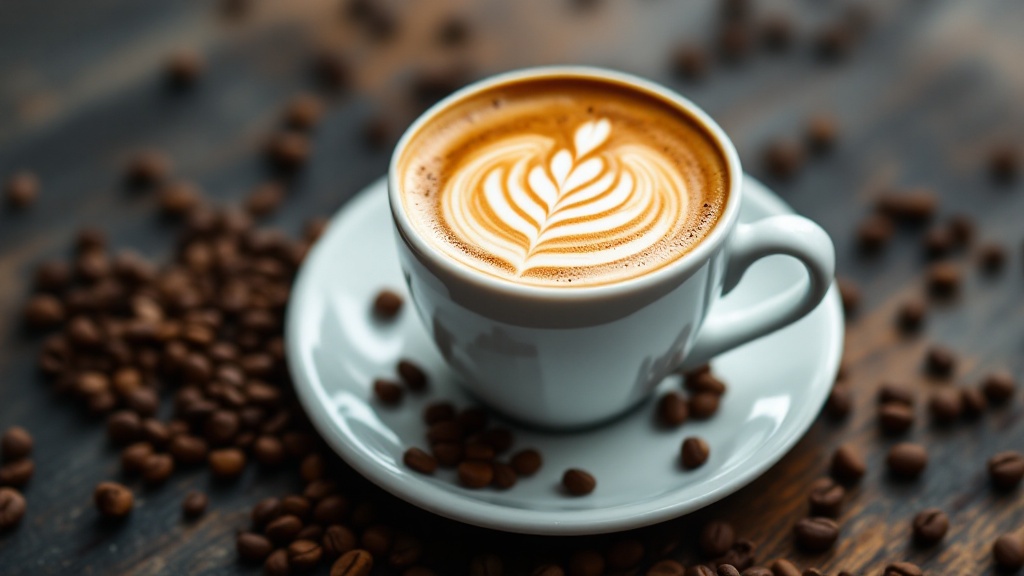
Once you’ve mastered the fundamentals, you can delve deeper into the art of coffee brewing. Here are some advanced techniques to explore:
Pre-infusion or Blooming: This technique involves adding a small amount of hot water to the coffee grounds and letting them sit for 30 seconds before continuing the brewing process. This allows the coffee grounds to “bloom,” releasing trapped gases and enhancing the flavor.
Experimenting with Different Beans: Exploring different coffee origins, roasts, and processing methods can open up a world of flavor possibilities. Consider trying single-origin beans or blends from various regions to discover your favorites.
Water Filtration: Investing in a dedicated water filter for coffee can further enhance the flavor of your brew. Look for filters that remove chlorine and other impurities while retaining beneficial minerals.
Practical Tip: Connect with your local coffee roasters or baristas to learn more about brewing techniques and discover new coffee varieties.
Bloom Optimization: Coffee Extraction
The pre-infusion, or blooming, stage significantly impacts coffee extraction efficiency and flavor profile. Optimal blooming involves a controlled degassing of the coffee grounds, releasing CO2 trapped within the bean structure during roasting. This degassing process is crucial; CO2 prevents uniform water penetration, leading to uneven extraction and channeling-a situation where water preferentially flows through certain pathways in the coffee bed, resulting in under-extracted and over-extracted areas within the same cup. A proper bloom ensures a more even extraction, maximizing the solubility of desirable flavor compounds.
- Bloom time typically lasts 30-45 seconds, allowing for sufficient CO2 release.
- The ideal bloom ratio is generally a 1:2 ratio of water to coffee (e.g., 50g coffee : 100g water).
- Gentle agitation during the bloom helps ensure even saturation of the grounds.
- Insufficient blooming leads to sour, under-extracted coffee; excessive blooming can result in bitter, over-extracted coffee.
- Factors like roast level and bean origin influence optimal bloom time and technique.
Sustainability and Your Coffee Habit
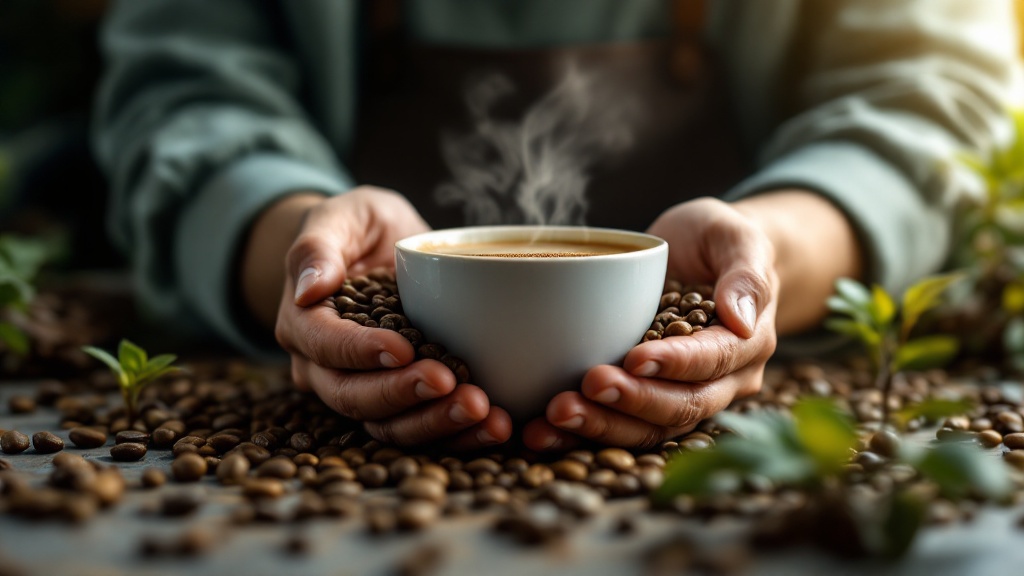
As coffee lovers, we can also strive to make our brewing practices more sustainable. Here are some eco-friendly considerations:
Reusable Filters: Ditching single-use paper filters and opting for reusable metal or cloth filters reduces waste. These filters are not only environmentally friendly but also allow for a fuller-bodied cup, as they don’t trap coffee oils like paper filters.
Compostable Pods: If you prefer the convenience of single-serve machines, consider using compostable pods made from plant-based materials. These pods break down naturally, reducing your environmental impact.
Ethically Sourced Coffee: Supporting coffee brands that prioritize ethical sourcing practices ensures fair treatment of farmers and promotes sustainable agricultural methods. Look for certifications like Fairtrade or Rainforest Alliance.
Reusable Filter Material Analysis
The efficacy of reusable coffee filters in reducing environmental impact hinges significantly on the material properties and their lifecycle analysis. Metal filters, typically stainless steel, offer superior durability and longevity, minimizing the need for frequent replacements. However, their manufacturing process involves energy-intensive metallurgical operations and potentially harmful chemical treatments. A complete lifecycle assessment (LCA) would need to consider the energy consumed in production, transportation, and eventual disposal or recycling, often using metrics such as carbon footprint (measured in kg CO2e) and water footprint (measured in liters). The higher initial cost is offset by the elimination of ongoing disposable filter purchases.
- Stainless steel filters’ manufacturing involves carbon emissions from ore mining and processing.
- Cloth filters (e.g., cotton, hemp) offer a lower carbon footprint than stainless steel but require more frequent washing and replacement.
- The water footprint of reusable filters is largely determined by cleaning processes and material production.
- A comprehensive LCA should account for potential microplastic release from some reusable filter materials.
- Transportation distances impact the overall carbon footprint of both reusable and disposable filters.
- End-of-life management (recycling or disposal) significantly affects the overall environmental impact.
Conclusion: Your Journey to the Perfect Cup

The world of coffee making is a journey of discovery, experimentation, and, ultimately, enjoyment. By understanding the nuances of different brewing methods, investing in quality tools, and refining your technique, you can unlock the full potential of your coffee beans and achieve that perfect cup every time. Whether you prefer the simplicity of a drip machine or the precision of a pour-over, the key is to embrace the process and savor each delicious sip.
Optimal Water Extraction Ratios
Achieving the perfect cup hinges critically on the extraction yield, defined as the percentage of soluble coffee solids extracted from the grounds during brewing. This yield is directly influenced by the water-to-coffee ratio (WCR) and brew time. A WCR that is too low results in over-extraction, yielding a bitter, astringent cup due to the extraction of excessive undesirable compounds like tannins and chlorogenic acids. Conversely, a WCR that is too high leads to under-extraction, producing a sour, weak brew lacking body and flavor complexity because insufficient soluble compounds are extracted. The optimal WCR and extraction yield vary depending on the coffee bean’s origin, roast level, and grind size.
- The “sweet spot” extraction yield is generally between 18-22%, though this can vary.
- A coarser grind generally requires a higher water-to-coffee ratio for optimal extraction.
- Darker roasts often require less water than lighter roasts to achieve ideal extraction.
- Experiment with ratios like 1:15 (water:coffee) or 1:17 to find what works best for your beans and brewing method.
- Using a scale to measure both water and coffee grounds ensures consistency and repeatability.
Brew Your Best: Mastering the Art of Coffee
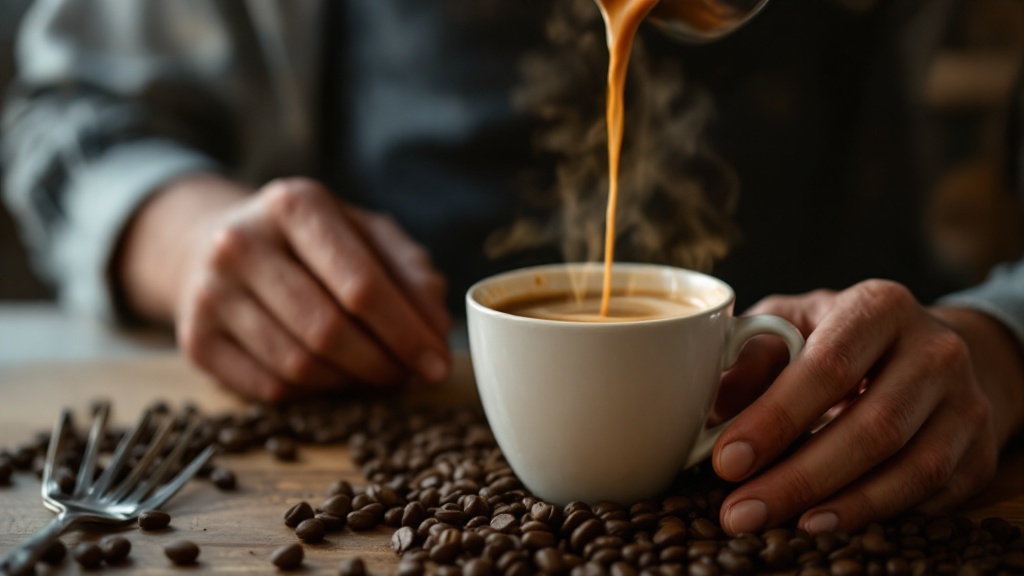
Extraction Yield Optimization
Achieving optimal coffee extraction yield is crucial for producing a balanced and flavorful cup. Extraction yield, expressed as a percentage, represents the ratio of dissolved coffee solids to the total amount of coffee grounds used. Ideally, this should fall within a range of 18-22%, though optimal yield can vary based on bean origin, roast level, and desired flavor profile. Falling outside this range results in either under-extraction (sour, weak brew) or over-extraction (bitter, astringent brew). Precise control over several variables is required to achieve consistent results.
From the humble drip machine to the sophisticated espresso maker, the journey to coffee mastery starts with understanding your brewing equipment and its potential. Whether you prioritize convenience, precision, or the nuanced flavors of a French press, the right coffee maker can transform your daily ritual into a delightful experience. By considering your individual preferences and exploring the different brewing techniques discussed, you’re well on your way to unlocking the full potential of your coffee beans and achieving barista-level results in the comfort of your own home. The perfect cup isn’t about luck; it’s about informed choices. It’s about understanding the interplay between grind size, water temperature, and brewing time. It’s about appreciating the unique character of each brewing method and how it shapes the final flavor profile. Armed with the knowledge you’ve gained, you can now confidently navigate the world of coffee makers and select the perfect tool to elevate your coffee experience. Don’t settle for mediocrity; embrace the power of choice and embark on your personal quest for coffee perfection. Now, it’s time to put this knowledge into action. Explore the options, experiment with different techniques, and discover the brewing method that speaks to your coffee soul. Brew smarter, not harder, and savor every sip. “`- Grind size significantly impacts yield; finer grinds increase extraction, coarser grinds decrease it.
- Water temperature plays a crucial role; generally, between 195-205°F (90-96°C) is ideal but can vary.
- Brew time directly correlates with yield; longer brew times generally lead to higher extraction.
- Coffee-to-water ratio influences the final concentration and therefore the perceived yield; a higher ratio means more coffee solids per unit of water.
- Using a refractometer provides precise measurement of dissolved solids for accurate yield calculation.
| Key Aspect | Optimal Range | Impact on Yield | Flavor Outcome |
|---|---|---|---|
| Extraction Yield | 18-22% | Balanced extraction | Balanced, flavorful |
| Grind Size | Fine to Coarse | Finer increases, coarser decreases | Sour (under), bitter (over) |
| Water Temp | 195-205°F (90-96°C) | Crucial for extraction | Optimal flavor |
| Brew Time | Varies | Longer increases yield | Higher extraction |

